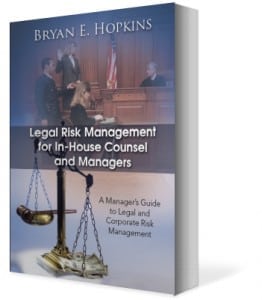After The Dolgorae- The Sewol Ferry Disaster Revisited, A Risk Management Nightmare
How a lapse in enforcing risk management processes once again resulted in a disaster....
The latest maritime disaster in Korea once again not only raises the spectre of the Sewol disaster but once again reinforces the fact that risk management processes including compliance training must be vigorously implemented and reinforced on a daily basis.
Recently, a fishing boat ( Dolgorae) off the coast of Jeju Island in Korea capsized resulting in the deaths of at least 18 people. It was caused by a culmination of events leading up to the disaster similar to the Sewol Ferry. The facts appear to be as follows: On September 5 a fishing boat carrying at least 22 people capsized off of Chuja Island. Apparently more people were on the boat than should have been allowed. The boat allegedly capsized because of high waves. The captain either failed to radio for help or the radio on the boat did not work. When the Chuja Safety Center received a distress call from another boat which indicated the Dolgorae had not responded to its call, the Chuja Safety Center began calling passengers based on the passenger list. By then it was already too late, as the majority of passengers that died were not wearing life jackets when the boat capsized, according to the few passengers that were ultimately rescued. Because more people were on the boat than indicated by the passenger list, because the captain’s radio did not work after the boat capsized, because the captain went out in questionable weather, because the majority of passengers were not wearing life jackets when the boat capsized and because other safety regulations were not met-not only did the boat capsize but many died that may have lived had adequate risk management processes been followed. This raises the shadow of to the Sewol Ferry disaster..
Remember- On April 16, the Sewol Ferry left Incheon heading to Cheju Island. Most of the 476 passengers were high school students going on a school trip. At 8:52 am , a high school student on board the Sewol issued a distress call. At 8:58 am the Sewol Ferry finally issued a distress call ( though not though the normal distress channel) on its own. At 9:00 am to 9:30 am the Crew issues announcements to the passengers to stay put. The Jindo VTS informs the Captain that he needs to make a decision to evacuate the vessel or not. At 9:32 am the first Coast Guard vessel arrives at the scene. By 10:39, the Sewol Ferry sinks leaving more than 300 people trapped inside the vessel.
When looking at incidents involving disasters such as the Sewol Ferry, it becomes apparent that most disasters are a result of a risk management mistakes, such as not following safety procedures or not repairing critical equipment on time, etc.
Here are some of the risk management mistakes of the Sewol Ferry disaster that stand out:
It is obvious, that the Sewol Ferry or the Dolgorae are extreme examples of a risk management failure. But it is a reminder that companies as well as individuals that decide to skirt burdensome risk related processes designed to minimize the exposure of risk may be flirting with disaster. This is reminder to all companies and individuals involved in safety related occupations as well as companies in heavily regulated industries that not only should risk management processes be implemented but that such processes need to be reinforced on a daily basis. The world may not be kind. Mother Nature may be capricous. Control and manage the risks that you can. There is no room for failure.
 Trade Secrets- Are You Protected?.....We live in a competitive world. The extent to which a company is able to protect its trade secrets is an important factor in its overall ability to survive and prosper. In the employment context, complicated legal issues arise when a departing employee is in a position to use and/or disclose confidential information to a competitor.
Trade Secrets- Are You Protected?.....We live in a competitive world. The extent to which a company is able to protect its trade secrets is an important factor in its overall ability to survive and prosper. In the employment context, complicated legal issues arise when a departing employee is in a position to use and/or disclose confidential information to a competitor. To Save Time and Money Select Your Predispute Strategy Before The Dispute!
In today’s hectic unsympathetic world, little time is spent on dispute resolution strategies prior to the start of a dispute. Little thought is given on how to handle negotiations prior to negotiating. Companies or organizations do not think about arbitration strategies as well as preventive measures prior to initiating arbitration. In fact, very few companies train employees on predispute strategies nor on how to select dispute resolution strategies before the dispute arises.
Selecting a predispute strategy can save time and money. Predispute arbitration or predispute mediation provisions can be used to strategically impact the cost and timing of resolving the dispute. Other contractual provisions can also be used to impact the dispute resolution process such as liquidated damages or attorney fees and costs provisions requiring the loser to pay attorneys’ fees. This is one form of predispute strategy- making it harder or more costly for the other side to prosecute a claim or to defend the dispute resolution strategy. But there are other benefits as well.
Training employees to use pre-dispute resolution strategies not only encourages people to proactively handle disputes- ie resolve the dispute before it occurs, but it forces them to carefully consider the advantages and disadvantages of each form of dispute resolution prior to deciding on which form of dispute resolution to use. Each form of dispute resolution, such as negotiations or mediation (or even litigation) has its merits. And, of course, each form has its disadvantages as well. Spending time carefully considering the strategy before having to implement it allows one to consider various issues such as cost and expense, time considerations, enforcement, applicability and in cases of arbitration or litigation- relevant laws and the forum of the dispute. In some cases negotiations or even use of an ombudsman may be efficient.
Each situation has a certain level of risk and each company or even individual has a certain level of risk tolerance. In fact, a Board of Directors may have a different risk appetite than the management of a company. Selecting a pre dispute strategy helps all relevant parties in the organization or company discuss the risk involved with the various dispute resolution strategies. In this regard, when discussing pre dispute resolution strategies it may be helpful to use a decision tree to map out the various dispute resolution strategies and the risk as well as cost involved.
Disputes arise in many commercial as well as non commercial situations. Some disputes may require litigation some may not. However, the more one is prepared prior to the actual dispute itself, the more efficient and less costly the dispute resolution process may in fact become. Therefore, prior to a dispute arising, select your predispute resolution strategy.
 Arbitration in Korea- A new arbitration hub in Asia
Arbitration in Korea- A new arbitration hub in Asia
Anyone doing business in Korea knows that alternative dispute resolution ( ADR) is gaining popularity in Korea. This is especially true of arbitration which has seen a dramatic increase in the number of arbitration cases over the last few years. (more…)
 In the late 1300s, once the Chosun Dynasty was founded, work began in the new captial of Korea ( Seoul) which inlcuded the building of the inner and outer walls. The inner walls were built through the 4 major mountians surrounding Seoul, inlcuding Mt. Inwang. Because the wall foundations were very well built and because most of the wall was built through the mountains, much of it ( as evidenced by the picture of the wall on Mt. Inwang) still remains. In fact, the Seoul City inner wall, is the longest survivng wall of any major city in the world- relativley untouched by invasions and war. Whether a wall survives the test of time, depends on several factors. The same can be said for corporations. Corporations survive for the long term if the company is properly managed, if the business plan is updated with the times, if the product or service keeps up with demand and of course, if the risk management processes are robust enough to handle the numnerous areas of risk that the company will, most often than not, encounter.
In the late 1300s, once the Chosun Dynasty was founded, work began in the new captial of Korea ( Seoul) which inlcuded the building of the inner and outer walls. The inner walls were built through the 4 major mountians surrounding Seoul, inlcuding Mt. Inwang. Because the wall foundations were very well built and because most of the wall was built through the mountains, much of it ( as evidenced by the picture of the wall on Mt. Inwang) still remains. In fact, the Seoul City inner wall, is the longest survivng wall of any major city in the world- relativley untouched by invasions and war. Whether a wall survives the test of time, depends on several factors. The same can be said for corporations. Corporations survive for the long term if the company is properly managed, if the business plan is updated with the times, if the product or service keeps up with demand and of course, if the risk management processes are robust enough to handle the numnerous areas of risk that the company will, most often than not, encounter.
Have you looked at your risk management processes lately? How robust are they? How strong are they? Have they stood the test of time like the wall on Mt. Inhwang, or are they outdated like some of the processes used by investment banks in 2008?
When considering which processes to use or update, remember to conduct periodic risk assessments that monitor the effectiveness of the risk management processes. Only through a process of continuous risk assessments can a company effectively manage risk by identifying weaknesses in the system, which helps it to effectively maintain a robust risk management program.
What steps has your organization taken recently to conduct a comprehensive risk management program? Has it reviewed all critical corporate processes and procedures? When evaluating risk assessments in order to minimize risk, especially legal risk, specific goals or objectives should be established in which to judge the risk assessments that have been completed. What are the goals or objectives, if any, that have been established? When determining the objectives to evaluate risks, what specific processes or tools are in place to obtain those objectives? All of these questions must be answered.
Remember, legal risk management processes must be properly applied in order to provide risk management expertise and to prevent losses due to claims, litigation, investigations and fines. Such processes should include:
1. A periodic risk assessment of the company's operating divisions and departments,
2. The development of solutions to risk management issues,
3. Oversight of the company's outstanding claims and litigation,
4. Compliance review,
5. Training programs, and
6. Monitoring of compliance issues
Only with a proper implementation of a robust risk managment process can a company expect, with all things considered, to last like the Seoul City Wall on Mt. Inwang. Without it, the company like a wall , may come tumbling down.
In managing ERISA claims dont forget your fiduciary duty!
NOTE: One of the most important audits a risk manager/in-house counsel should conduct as part of a risk managment program is an audit of employee benefit plans. Many countries offer employee benefit plans, pensions, or related schemes in accordance with local laws. In the U.S., employee benefit plans or retirement benefit plans are subject to the requirements of the Employee Retirement Income Security Act of 1974, as amended (ERISA).
For subsidiaries of foreign owned companies doing business in the U.S. or even for US based companies, it is very important, for reasons set forth below that a risk management program cover an ERISA audit as well as a compliance review. Failure to do so, could subject a company in the U.S. as well as the company’s board of directors ( BOD) to $$$ in fines and penalties, not only from the Department of Labor’s standpoint but from the I.R.S. standpoint as well. Therefore, either the in-house counsel or the risk management department must conduct the audit. As most companies have HR coordinating employee benefit plans, I would not have HR conduct the audit. The audit should be conducted impartially.
Regulations adopted pursuant to ERISA set fort requirements respecting employee retirement and welfare benefit plans (the “Plan”), include:
ERISA requires that health and welfare plans be set forth in a written document which describes the benefit and the operation of the Plan. The document must identify who is responsible for the control, management and operation of the Plan. The Plan must also have recordkeeping systems to track the flow of funds and written. Materials to provide to Plan participants.
The general review of a compliance audit should focus on three areas:
ERISA sets standards of conduct for employee benefit plan sponsors and others who exercise discretion in managing a plan or plan assets. Therefore, use of discretion in administering and managing an employee benefit plan or controlling the plan’s assets makes that person a fiduciary to the extent of such control or discretion. Fiduciary status is determined based upon the functions performed. Each Plan must have a named fiduciary; however, a person does not need to be named to be a fiduciary; who jointly or severally control and manage the operation and administration of the Plan. The Plan instrument may actually designate the named fiduciary or may specify a procedure for naming the fiduciary by the employer.
ERISA sets forth the standards and rules of conduct for plan fiduciaries. Plan fiduciaries are required under ERISA to fulfill a number of duties including:
A fiduciary who breaches any responsibility or duty under ERISA may be personally liable to make good any losses to the Plan resulting from the breach. All fiduciaries have potential liability for the actions of their co-fiduciaries. Breaches of fiduciary responsibility can give rise to civil and criminal penalties, which can be enormous. This has been opened by the U.S Supreme Court. The U.S. Supreme Court has held that individual employee may bring an action for “appropriate equitable relief” under ERISA against an employer for breaching its fiduciary duties. And recently, the US Supreme Court ruled that plan administrators must continue to monitor trust investments and remove imprudent ones. This is a continuing duty which is seperate from the duty to exercise prudence in selecting investments from the beginning. In order to properly follow principles as plan administrators the US Supreme Court therefore ruled that plan administrators must act with "skill, prudence, and diligence" and if not- they have breached their fiduciary duty!
Remember, it is cucial that subsidiaries of foreign owned companies doing business in the US that have employee benefit plans inlcuding 401 K plans follow ERISA regulations thoroughly and that their respective BODs fullfill their fiduciary duites properly. It is also important to recognize where the company’s board is acting in a fiduciary capacity or on behalf of the employer in a non-fiduciary capacity. If the BOD fails to act prudently in a fiduciary capacity it and/or the company is exposed to claims worth $$$$ millions of dollars. Just ask Lockheed Martin, Boeing, or Edison International.